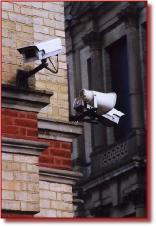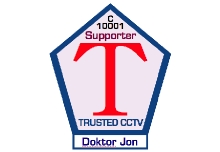 |
||
 |
||
![]()
![]()
![]()
![]()
![]()
![]()
![]()
![]()
![]()
![]()
![]()
![]()
![]()
![]()
![]()
![]()
![]()
![]()
![]()
![]()
![]()
![]()
![]()
![]()
![]()
![]()
![]()
![]()
![]()
![]()
![]()
![]()
![]()
![]()
![]()
![]()
![]()
![]()
![]()
IMPORTANT: No material may be reproduced, copied or redistributed from this site, without the express written consent of doktorjon.co.uk
All the detailed information on this site is provided in good faith; and as such, Doktor Jon does not accept responsibility for any consequential loss, injury or disadvantage resulting from any individual or organisation acting on the details contained herein.
© doktorjon.com 2004 - 2012
![]()
![]()
![]()
![]()
![]()
![]()
![]()
![]()
![]()
![]()
![]()
![]()
![]()
![]()
![]()
![]()
![]()
![]()
![]()
![]()
![]()
![]()
![]()
![]()
![]()
![]()
![]()
![]()
Please Note - Doktor Jon is currently upgrading his site, so you may see some layout changes on various pages, whilst the work is in progress.
Hopefully, the complete re-design and improvements, should be completed during 2012.
Step 1 is the Risk Assessment Survey (RAS) - which is in some respects the key to designing an effective Video Surveillance system.
If you can successfully identify where the risks lie, and their precise nature, it becomes much easier to configure a CCTV / IP or Network Video surveillance system to take account of these potential problems. This assessment can be applied at a ‘Global’ level (i.e. the overall risk to an area or the entire site), at a ‘Macro’ level (i.e. a specific area or zone within the site), and also a 'micro' level (at a specification physical or camera location).
For more information on Risk Assessment Surveys >
Step 2 is the Crime Audit (CA) - Before you can effectively address any given security problems using CCTV, you first need to understand the scope and complexity of any criminal behaviour which has so far taken place. Again, this can usefully be applied at two or possibly three distinct levels of analysis; ‘Global’' which will relate to the entire premises, site or location, ‘Macro’ for a specific area, and 'Micro' which applies to a defined point on the drawing, map or plan.
When compiling a crime audit, it is important to list all of the incidents that have taken place within or adjacent to, the area to be protected, in particular making note of the date and approximate time, and also if appropriate, the ambient conditions when the offence took place ( so for example, there may be a pattern of criminality in a car park which relates to hours of darkness, or indeed no crime at all on rainy days - all information is useful for planning purposes).
In addition, the audit should also reflect whether any action resulted in identification of suspects, arrests or convictions (this will help to compare the effectiveness of CCTV, after it has been installed). For more information on Crime Audits >
Step 3 is the CCTV System Profile (SP) inc. Operational Requirements (OR) - As far as Doktor Jon is concerned, this is the most crucial step to success; although if the truth be told, it wouldn't be much use without having effectively carried out the first two stages.
Having collated the Crime Audit (both global, macro and additionally micro if thought necessary), and carried out a thorough Risk Assessment Survey, it now comes to a point where you have to try and make sense of all this raw data, and for that you need to prepare a CCTV System Profile.
By identifying the risks and existing problems, it is then a straightforward exercise to determine using the DISE principles, what the actual objectives are for the eventual system. Using this background information, it should then be possible to describe what type of equipment and system structure will best meet the needs of the site (and systems) operational objectives.
For more information on System Profiles >
Step 4 is the actual CCTV System Design (SD) - Using the descriptive information in the System Profile, it is then possible to put together the framework for an operational video surveillance system, and also a shopping list of appropriate equipment that best suits the needs of the project.
Step 5 is the issue of Legal Compliance - At this point, it is sensible to review all aspects of the proposed system, to ensure that whatever is commissioned and operated is both lawful, and ultimately, that the recorded results are admissible (hopefully unchallenged) as acceptable evidence in legal proceedings.
Special consideration should be given to existing planning legislation, to make sure that all external cameras are installed lawfully, the Data Protection and Human Rights Acts (where appropriate) which determine how recorded material may be obtained and processed (particularly important when considering the recording and storage of material), and in situations where targetted surveillance is employed, that additional law such as RIPA 2000 are carefully considered and accounted for.
Also for larger control rooms or situations where contract staff are required to actively monitor the system, licensing and compliance with the Security Industry Act is also an absolute requirement.

Is your Video Surveillance System
capable of being 'TRUSTED'©
Let's have a slightly more detailed look at the various stages involved in achieving a video surveillance system that is TRUSTED"©.
It's worth quickly mentioning that although these stages normally apply to a system about to be installed, it is equally valuable to review some if not all of these stages for an existing installation.





